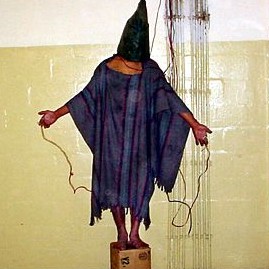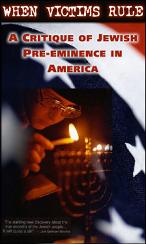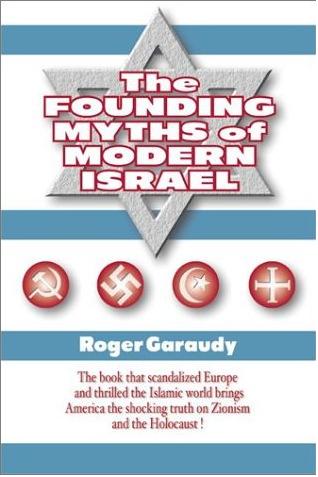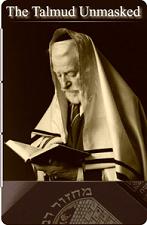Robert Faurisson on a violent Jewish attack in Stockholm, 1993:
Impossible Conference in Stockholm
Recording in Stockholm
May 22, 1993
My name is Robert Faurisson. I am 64 years old. We are today the 22nd of May 1993. I am in Stockholm at the end of a difficult day. This afternoon I was supposed to give a talk in Stockholm in a private place to some people interested in revisionism. But it wasn’t possible. When, with my friend Ahmed Rami, I got near that place, we were attacked by some hooligans who had their faces hidden, and I was told that they had stones and knives. We received one stone on our car, on the windscreen, which did not break. We had to leave. It was impossible for me to give that talk.
When I got back to my hotel room I received a phone call from France and learned that yesterday, the 21st, something had been published in France saying that a Jewish organisation, the Jewish militant organisation called Betar, had decided to stop me from entering your country. And they did decide to stop me. They said even by force, by physical violence. They didn’t do it at Arlanda airport, because I arrived there two days ago. But they prevented me from talking today, the 22nd of May.
When, on the 20th of May, I arrived at Arlanda airport I was, for the first time, received in this country as a normal human being. This had not been the case on the 17th of March 1992, when I was stopped by the police. It was not the case in December 1992 when the police stopped me once more. This time I had no trouble with the police, no trouble with customs. And I saw my friend Ahmed Rami. Some journalists were there. And especially a lady from Expressen.
They asked me: “Why are you coming to Sweden?”. And I said: “For two reasons. First, to visit my friend Ahmed Rami who invited me. Second, because I want an answer to my challenge to the Swedish media.” And I was asked: “What was your challenge?” I replied: “On the 17th of March I said to the Swedish media: ‘I have a challenge for you: Please, show me or draw me a Nazi gas chamber.’ Because, since 1960, since the time I became interested in the problem of the Nazi gas chambers, I have never seen a gas chamber, even at Auschwitz. I have never seen a plan. I have never seen a model, a convincing model with technical explanations of those extraordinary chemical slaughterhouses. I am ready to say “the Nazi gas chamber existed”. But please describe what it could look like. I have never seen this.
When you know that it was supposedly gas chambers functioning with Zyklon-B… When you know what Zyklon-B was… It was an insecticide, invented in 1922 by the Germans and still used today. When you know how difficult it is to handle this poison gas… When you know that you cannot enter a place full of bodies permeated with this gas to remove them…
And with the extraordinary procedure that you can see in an American gas chamber when only one man is to be executed, you cannot help being very sceptical about those Nazi slaughterhouses, where hundreds or thousands of persons were supposedly killed and then dragged out of the gas chambers. I said on the 17th of March 1992: “Be careful: don’t show me a wall. Don’t show me a door. Don’t show me piles of hair, shoes. I want a total picture of a Nazi gas chamber.” And I said: “Be careful: you have 24 hours to answer my challenge. And I’m going to comment tomorrow night on your answers to my challenge.”
That challenge was not answered. Nor even mentioned by the Swedish media. I repeated that challenge in December 1992. And I had another one. I said: “I am ready to meet on the TV, not a journalist, not a politician, but an historian or several historians about what is call ‘the Holocaust’.” And this challenge was not mentioned either. But, you see, this time it was rather pleasant for me, I say, to see that I was not insulted on my arrival. And I thought that maybe I could hold one or more conferences. This is not the case.
We are, I think, peaceful people. Asking questions or showing the result of our research. And I don’t see how the fact of answering by insulting or beating people up could be a good answer. Myself, since 1978, I have been attacked, oh, I used to say 8 times; today I am obliged to say 9 times, because of my ideas. And not even my ideas, but the result of my research. Because I am not a Nazi. I think that if I were a Nazi I would say it. I am not a criminal. I am not a racist. And I have personal reasons to say that I am not a racist. I am not going to go into this. I want only to have the right to be curious about things that are strange.
There is an American historian. He is a Jew. His name is Arno Mayer. He is a professor at Princeton. In 1988 he published a book Why did the heavens not… I don’t remember the exact title. The real title is: The Final Solution in History. On page 362 this Jewish historian, who says that he believes in the Holocaust, has, all the same, this sentence. And I would like you to think about this sentence. Very short one: “Sources for the study of the gas chambers are at once rare and unreliable.” How is it that those sources can be said today to be “rare and unreliable”? We have been told for years and years that those sources were as numerous as possible. As strong, as reliable as possible. And this man comes and say: No, they are rare and unreliable. And he gives his reasons for saying that. He says that we have to be very careful with so-called testimonies. Very careful with confessions. And he evens says that, certainly at Auschwitz, and perhaps in every other camp, more people, more Jews died of natural causes than of unnatural causes. By “natural causes” he means starvation, hard work, epidemics, specially of typhus. And this is why the Germans in their camps had ovens for burning the dead. We’ve never said that there were no persecutions of the Jews. We’ve never said that there were no deportations, no concentration camps. All that existed. But we say that there were no gas chambers to kill people. We have arguments. And if you are interested you should try to see those arguments and to think of them.
Now, you must know that revisionism is not at all an ideology. It’s a method. It’s a way of working, of checking and double-checking things. And I think that we should have the right to express our views. Because I think that most Swedes do not know at all what we are talking about. Because what they hear is only the accusation against the revisionists. If the people who are accusing us are so sure, they should be ready to bring us onto the TV and show how ridiculous we are, with our chemical arguments, physical, topographic, I mean the topography of the camps, architectural arguments, architecture of the crematoria, supposed to have had gas chambers, documentary arguments and any historical arguments. You cannot judge if you have not heard both the accusations and the defence.
Now you could say: “But we have heard many witnesses. Do you mean, Mr Faurisson, that those witnesses are liars?” My answer would be: “No, I certainly do not say that they are liars. I would say that they are victims of an historical lie.” When in your newspaper you read a news item which happen to be false, and if you repeat it, it doesn’t mean that you are a liar. It means that you are a victim of a lie, or of an error, or of a mistake. So I don’t say that those people are liars.
Now, do you think that we can find any witnesses of the gassings? I thought so myself until 1960, when I had my first doubt that there were many witnesses. As you perhaps know I have had many, many trials in France. And always I’ve asked for a witness to come and testify and to be examined and cross-examined about what he thinks he knows about the gassings. And I haven’t been able to have even one witness.
Sometimes people come to me and say: “How dare you, Mr Faurisson, say that the gas chambers did not exist! See my tattoo number. I was at Auschwitz. I was a witness.” And I say: “Sir (or madam), please look me in the eye. Do you mean that you have seen a gas chamber? That you saw a gassing? If this is the case, as you’ve said you did, please describe it.” Every time the answer is: “You know perfectly well that if I had seen a gassing I wouldn’t be here to talk to you.” They mean “I would have been killed.” Now, this is a strange answer. Because first those people have presented themselves as witnesses of gassings. And then, according to what they say, there cannot be witnesses. They are wrong. If, at Auschwitz, you had had those fantastic chemical slaughterhouses, functioning day and night for years and years killing hundreds of thousands or millions of people, you would have had many, many witnesses.
You must know that Auschwitz was a camp were you had many civilians coming from outside and working in the camp. We have many, many documents about Auschwitz. I’d say millions of documents about those camps. And we have not the slightest proof, material proof that there were any gas chambers. Now you could say something else. You could say: “But I have visited Dachau” or “I have visited Auschwitz and I have seen a gas chamber.” I’m sorry. If you’ve visited Dachau, please go back and you will see that the room which is presented as a gas chamber has a sign saying: “Gas chamber disguised as a shower room – never used as a gas chamber”.
And if you ask the people in charge: “But why do you say that it was a gas chamber, never used?”, they’ll say because the Germans had no time to finish this gas chamber. They began the construction in 1942, and in 1945 it was not finished. But my question is: “Can you please tell me what’s missing for us to have a gas chamber?” There, anyway, you say that there were no gassings. You say this now. But at the big Nuremberg trial a film was projected on the 26th of November 1945. And this film showed and described the so-called gassing in Dachau. And now we are told that it is false. So what about all the witnesses? The same question for Auschwitz. When you visit Auschwitz you see a room called a gas chamber. But do you have the idea of looking carefully into this place? You can see a tiny little door with a glass pane. If you had put people into this place they would have broken the door, broken the glass. And the gas, the dreadful gas, used to kill lice and not people, would have gone to the SS-hospital which was just 20 metres away. And this door opens inside, into the place where the bodies are supposed to have been.
So, for those reasons and many others it cannot be a gas chamber. And I myself have found the building plans. And I can tell you what it was, in fact. In fact, it had been first a place were they stored the bodies of people who’d died from typhus, or anything, awaiting cremation. And then it was transformed into an air-raid shelter.
So please, when you see a place called a homicidal gas chamber, not a delousing gas chamber, ask “Why do you call this a homicidal gas chamber? What kind of proof do you have?”
A few weeks ago I was in Washington, on the 22nd of April, for the dedication of the Holocaust Memorial Museum. And I was waiting for the opening of this Holocaust Memorial Museum. I was very curious to see what kind of gas chamber they would show. Because my challenge to the Swedish media was in fact an international challenge. And do you know what? In this Holocaust Memorial Museum, which cost millions of dollars, the gas chambers that you see is a delousing gas chamber, presented as a homicidal gas chamber. It is a gas chamber that you can visit in Majdanek, Poland. And it’s not only me who say that, not only me who say that it’s a delousing gas chamber. But even the adversaries of the revisionists. And especially Klarsfeld. Mr and Mrs Klarsfeld. He is called the Nazi hunter. He published a book written by a man called Jean-Claude Pressac. On Auschwitz, at the end of this book, presented by a Jewish institution, the Klarsfelds’ foundation in New York, you have the photo of this Majdanek delousing gas chamber. And it is said that this was a delousing gas chamber.
So it means that in Washington they are showing you – and this is a lie – a disinfestation or delousing gas chamber as a homicidal gas chamber. In other words, what the Germans had built and used to protect their own health and the health of the prisoners. Because the clothes of the prisoners were disinfested in this place. They show this as something that the Germans had built and used to kill their prisoners. Now, this is really too much.
I think it is time to give my conclusions. We should have the right to ask questions. And not to be insulted. And also, I would say something else. I know that your country has received Salman Rushdie very well. Maybe Salman Rushdie will be killed tomorrow. This is possible. He is condemned to death. But myself, I am condemned to death by some Jewish organisations, like Betar. A Jewish professor recently said in France: “I would personally kill Faurisson if I could”. But he can very easily. Because there is a difference between Salman Rushdie and myself. Salman Rushdie is afraid and he hides. I am not afraid. I have even my address and my phone number in the directory of the city in which I live in France. I do not hide. I really do not mind. I mind about the truth, and I don’t like to talk very much about the truth, because everyone says that he is working for the truth and telling the truth. No, I am interested in historical exactitude. I want to be exact. The name of this man who said that he would be ready to kill Faurisson – he said it on the 14th of December 1992 – is Pierre Vidal-Naquet. This man wrote a book called Assassins of memory. I am described as an assassin. Which is a way of saying to people: “You could kill this man. He is nothing more than an assassin.”
Now, you must know something. I responded very correctly to this man in 1982, with a book called Reply to Pierre Vidal-Naquet. And I see that this man today has his book published in English in the United States, that he is unable to answer our arguments and that now he wants to kill us. I don’t think this is fair. So, in this country Salman Rushdie was very well received. Myself, I’ve been very badly received. I thought that I would say: on two occasions among these visits. I am sorry to say: very badly received on three occasions. Because I came in March 1992, December 1992. I thought that this time perhaps it would change. It has not changed. This is a pity.
But believe me, people are wondering why I am doing all this. Let me try to answer. I am doing all this because I am not interested in money. I am not interested in honour. I am not interested in publicity. I am not pleased to show my face. I don’t like this. I am not interested in politics. I am not interested in religion. So I don’t do this against the Jews or for the Nazis. Absolutely not. I am a very curious man. I have what we call intellectual curiosity. I want to go and see things that are said to be mysterious, and that are mysterious. I don’t want anyone to stop me. And I want only one thing. And perhaps I should not say this. I don’t expect the people of my time to say that I am right or courageous. Because I know they will not say that. My children will not say that. But perhaps my grandchildren will say that. And this is important for me. I want them to say, using the past tense: “He was courageous”.
But you see, there are different forms of courage. When you have one kind of courage everybody says: “Oh splendid, bravo!” And they say this is military courage, courage of resistance, of whatever. But there is another kind of courage, extremely rare. It’s the courage of a man or woman who fights, keeps on fighting, when everybody spits on him or her. And he wants to fight, and to fight until the end. This is what I’m going to do.
Thank you. This cassette, I am told, can be broadcast by any radio station. And I am responsible for what I say. Not for what I am alleged to say.
Thank you very much.
May 22, 1993
|
Races? Only one Human race United We Stand, Divided We Fall |
 |
No time to waste. Act now! Tomorrow it will be too late |
|

































